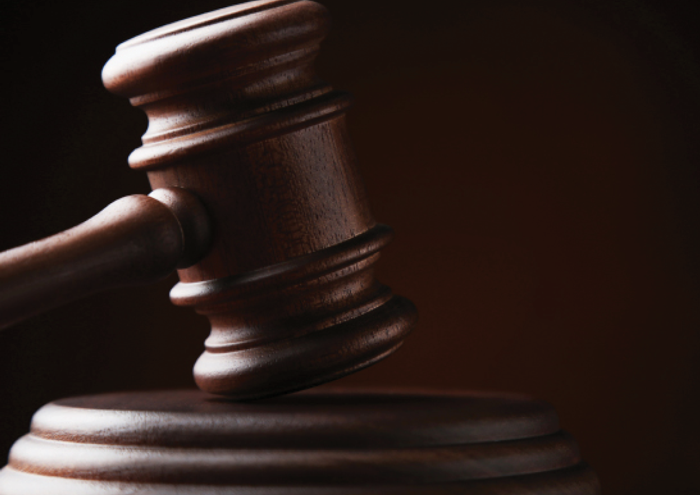Publication
Article
Psychiatric Times
A Look at the Ethical, Legal, and Clinical Issues Associated With Information Technology
Author(s):
New technologies pose challenges in the need to maintain boundaries and confidentiality. The same boundaries and ethical standards that existed in the 20th century must be thoughtfully applied with all new and developing technologies of the 21st century.

Information technology in the 21st century has brought dramatic changes to psychiatric practice and psychotherapy. There are many new possibilities and patterns for information use and for communication, as well as new ethical, legal, and clinical problems for the psychiatrist. One can ask how the Internet shifts standards of care required from therapists and whether ethical guidelines should change.
The same boundaries and ethical standards concerning the patient-psychiatrist relationship that existed in the 20th century still apply in the 21st century. While some of the conditions under which boundaries apply may be quite different, such as the potential speed of mutual communication provided by e-mail, the theoretical concepts defining boundaries remain the same. Maintaining confidentiality is an ethical duty for psychiatrists, protected by law. Communications between therapist and patient are privileged, and informed consent is needed to share any information about a patient.
A physician is a fiduciary to his or her patient. A fiduciary relationship exists when one person-the professional-accepts the trust and confidence of another person-the patient-and agrees to act only in the patient’s best interest. Acting in a patient’s best interest requires a professional to refrain from all behaviors that may present an unreasonable risk of harm to the patient.1 In the American Psychiatric Association’s Principles of Medical Ethics, Section 1, a psychiatrist’s first duty is to do no harm. These standards have not changed with the advent of Google, e-mail, social media, or other Internet communications.
In this article, we consider some of these technologies and recognize that there will always be new technologies.
Expect that your patients will Google you. Google yourself to see what you find. Should a therapist Google a patient? When patients post information on the Internet, it becomes public and is not protected. The psychiatrist may want to Google a patient to check whether the patient is delusional or has a criminal record, or to find out what medicines the patient might have taken in a suicide attempt. This is permissible legally-but is it ethically and clinically permissible?
In May 2009, Psychiatric News answered a query from a reader questioning whether it was ethical to Google patients: “We have learned that our psychiatry residents routinely ‘Google’ their patients. . . . Is it ethical . . . ?”2 The editors of Psychiatric News responded:
“Googling” a patient is not necessarily unethical. However, it should be done only in the interest of promoting the patient’s care and well-being and never to satisfy the curiosity or needs of the psychiatrist. Also important to consider is how such information will influence treatment and how the clinician will ultimately use this information. Psychiatrists should consider these questions before resorting to a Google search.2
The answer also cautioned clinicians that information obtained from a Google search cannot be verified as fact. Although the information provided by Google about a patient may be useful, the information may not be current or accurate, especially for clinical purposes.
CASE VIGNETTE
Dr M, a resident at a university hospital, reported to her supervisor that she had Googled a patient to verify whether information he had presented in the clinical examination was accurate or delusional. The patient reported that he was a famous author and an authority on posttraumatic stress disorder. Dr M found the patient’s multiple publications via a search on Google. Apparently, Dr M also learned that the patient had been involved in a number of drunk driving incidents and had an ethical charge relating to boundary violations.
Dr M’s dilemma centered on what to do with the information uncovered in the search. She did not know whether to confront the patient with the information or to ignore it because it was not relevant to the patient’s current clinical situation.
The doctor needs to let the patient know that a Google search was done, and then she has to discuss the re-sults with the patient. Material found on the Google search can come from any public record, such as police records.
E-mail certainly offers an additional means of communication and provides access to care for the patient. The use of e-mails can save time and solve the problems of missed calls. E-mails provide a relatively easy way to request and change appointments, order prescription refills, and handle other administrative issues. However, they may be sent and responded to without regard to time and place.
While e-mails may be helpful for administrative purposes, they are not a helpful treatment modality, even when combined with face-to-face therapy. As a general rule, e-mail is not secure: e-mail may be misdirected to the wrong person and read by unintended recipients. The potential number of people who may have access to e-mails poses many confidentiality and privacy problems.
Using e-mail as a therapeutic tool also poses many problems. Questions of reimbursement arise as well as those of confidentiality and security.3 The Health Insurance Portability and Accountability Act (HIPAA) applies whenever there is electronic transmission of personally identifiable health information.4 The use of e-mail can increase the risk of breach of confidentiality and violation of HIPAA. The psychiatrist should review with the patient the use of firewalls, passwords, antivirus software, and encryption.5
Boundaries of time and place provide a secure therapeutic framework that encourages stability and predictability. While the flexibility of time and place provided by e-mail may make communication easier, it also increases the risk of extending the sessions and disrupting or blurring the therapeutic frame. Moreover, because there are no visual or verbal clues, communication by e-mail may be misconstrued. The rapidity and intensity of e-mail makes familiarity more likely; therefore, transfer-ence and countertransference may be increased.6 Sometimes, there is role reversal.
The use of e-mail may result in boundaries being crossed; it is easy to go from professional communication to the personal. The exchanges may include discussions about books, operas, restaurants, plays, sporting events, health and exercise, and even the frustrations of the therapist with family or other patients; vacation photos may be shared. In some cases, the patient becomes the caregiver of the therapist.
In addition, patients can become consumed and preoccupied by e-mails to and from their therapists. A short sampling of 4 cases reveals a similar pattern. In these cases, there were some 1000 to 3000 e-mails sent between patient and therapist over 3 months to 2 years. Patients described their reactions:
• Patient A: “E-mailing is very intense . . . more so than face-to-face sessions. . . . I keep the e-mails and go over them repeatedly.”
• Patient B: “E-mailing with my therapist is very exciting . . . it is all-consuming. I feel such a strong connection. . . . I am glued to the computer.”
• Patient C: “It takes all my time . . . I read them over and over. . . . I am waiting for a response. I am careful not to let my husband see the e-mails.”
• Patient D: “I am tied to the computer like an addict, waiting for a response. I spend time thinking about my response and what will interest him.”
Although none of the cases involved a sexual relationship, the patients developed a strong attachment to and dependency on their therapists. When the therapists wanted to stop the e-mails, the patients felt abandoned.
Consequently, legal issues ensued. Expert opinion in each case found that the treatment fell below the acceptable standard of care. The patients had kept the e-mails and there was a perfect record of what happened. The e-mails were admissible as evidence in civil cases and board hearings. Eventually, the patients were successful in recovering monetary damages.
Psychiatrists should be careful to minimize liability when using e-mail. Steps should be taken to decrease the chance of potential harm to the patients. If using e-mail for anything other than administrative purposes, the therapist should document in the patient’s file the reasons for using e-mail as part of the treatment plan-make copies of the e-mail and put it in the patient’s file. The language of the e-mails should be professional and the content appropriate for medical treatment. All e-mail communication should be discussed with the patient during face-to-face sessions.
The patient’s informed consent for the use of e-mails is critical. The patient must be advised about the limits of confidentiality.7 E-mails may never be used in an emergency. In discussing privacy and security issues, the patient should be advised about who sees the e-mails, how often they are checked, and when the patient may expect a reply.
Social networking
There are a variety of online social networking sites, such as Facebook and LinkedIn; new social network sites are being developed regularly and old ones are becoming obsolete. Online social networking sites present many new challenges to psychiatrists. Does the psychiatrist have a Facebook page or a Facebook profile? The Queen of England has recently joined Facebook, but she does not accept friend requests. On the other hand, some physicians accept friend requests from patients.8 Does it make a difference if this is a former patient?9 How are privacy and confidentiality protected?
Should a psychiatrist ever accept a friend request from a patient? What happens when a patient asks to “friend” the psychiatrist? Context often influences the meaning of boundaries. Even in a small or closed community where people know each other, accepting a patient’s “friend” request can raise problems.
Social networking sites are interactive forums that require careful monitoring in a psychiatrist-patient relationship. Confidentiality is the primary guiding consideration, whether ethical, clinical, or legal. The laws in most states require that confidentiality encompasses the identity of the patient unless the patient waives his right. Accepting a “friend” request from a patient could easily violate this right.
Social networking sites also pose potential problems with HIPAA compliance. Whatever information the patient adds to the communication can be viewed by others. With rare exception, the therapist should not accept a “friend” request from a patient.
While self-disclosure has always been a clinical issue, social networking raises the bar to a new level. Although the therapist may not accept a “friend” request from a patient, he must be careful while social networking. Caution must be used in posting anything on a Facebook profile because it may become available for public viewing. Patients may be friends with the psychiatrists’ colleagues’ friends or others, without the patient’s knowledge, and the psychiatrist’s children may be friends with the patient’s children. Even privacy settings may not protect the therapist. Psychiatrists should educate themselves about privacy options.
Some clinical issues
For all information technology, the privacy and boundary issues that apply are the same as those for social networking. Twitter claims that it cannot guarantee privacy and security.10 Blogging is another concern; the psychiatrist is responsible for all content, even if others are allowed to comment.11
The Wall Street Journal reported that “the average 13- to 17-year-old sends and receives 3,339 texts a month-more than 100 per day. . . . ” 12 If you text, apply the same cautions to texting that you apply to e-mail. The texts should be e-mailed to the psychiatrist’s e-mail account, printed out, and put in the patient’s file.
The AMA House of Delegates, in November 2010, adopted a new ethics policy with regard to professionalism and the use of social media.13 The policy reminds physicians of the ethical responsibilities they should consider when they choose to have an online presence. This includes protecting confidentiality and maintaining appropriate boundaries in the online relationship, just as in any other environment.
The flow of unexpected information about a patient or psychiatrist can have both detrimental and helpful consequences. A patient’s knowledge about the private life of a psychiatrist can affect the therapeutic relationship. The traditional neutrality of the therapist is challenged and the therapeutic framework shifts-boundaries become blurred. The intensity of rapid e-mail exchanges and the affect and pseudo intimacy they can arouse need to be anticipated.
There may be some generational differences in the expectations of privacy and self-disclosure, and how these affect the psychiatrist-patient relationship. Awareness of these issues is important. A policy can help in guiding a psychiatrist’s decisions and in providing a context of safety and comfort for the patient.
Conclusion
Boundaries are needed to protect the therapeutic process and ensure that competent professional services are delivered. Boundaries help prevent harm and exploitation of the patient and protect the psychiatrist from possible legal consequences. As always, care must be exercised to protect confidentiality of all psychiatrist-patient communications.
New technologies pose challenges in the need to maintain boundaries and confidentiality. The same boundaries and ethical standards that existed in the 20th century must be thoughtfully applied with all new and developing technologies of the 21st century. Psychiatrists have a special ethical duty to think through how the use of these technologies affects patients.
References:
References
1. Jorgenson L, Randles R. Time out: statute of limitations and fiduciary theory in psychotherapist sexual misconduct cases. Okla Law Rev. 1991;44:181-225.
2. American Psychiatric Association. Ethics Corner. Is it ethical to “Google” patients? Psychiatric News. May 1, 2009. http://pn.psychiatryonline.org/content/44/9/11.1.full?sid=c2dc0bf6-8db7-4c8e-ac54-2f51bee067c9. Accessed May 10, 2011.
3. American Medical Association. Guidelines for Physician-Patient Electronic Communications. 2011. http://www.ama-assn.org/ama/pub/about-ama/our-people/member-groups-sections/young-physicians-section/advocacy-resources/guidelines-physician-patient-electronic-communications.shtml. Accessed April 26, 2011.
4. Recupero PR. E-mail and the psychiatrist-patient relationship. J Am Acad Psychiatry Law. 2005;33:465-475.
5. American Psychiatric Association, Joint Reference Committee. The Internet in Clinical Psychiatry. October 2009. http://www.psych.org/Departments/EDU/Library/APAOfficialDocumentsandRelated/ResourceDocuments/200920.aspx. Accessed April 26, 2011.
6. Gutheil TG, Brodsky A. Preventing Boundary Violations in Clinical Practice. New York: The Guilford Press; 2008:70-73.
7. Kane B, Sands DZ. Clinical guidelines for the clinical use of electronic mail with patients. JAMIA. 1998;5:104-111.
8. Cohen E. Should you ‘friend’ your doctor on Facebook? CNN Health. September 2009. http://articles.cnn.com/2009-09-03/health/friending.your.doctor_1_social-networking-heart-patient-doctors-and-patiens?_s=PM:HEALTH. Accessed April 26, 2011.
9. Jain SH. Practicing medicine in the age of Facebook. N Engl J Med. 2009;361:649-651.
10. Twitter Privacy Policy. 2011. https://twitter.com/privacy. Accessed April 26, 2011.
11. American Psychiatric Association. Risk management tips for physician bloggers. Psychiatric News. September 18, 2009. http://pn.psychiatryonline.org/content/44/18/31.full. Accessed May 10, 2011.
12. Rosman K. Y U luv texts, H8 calls. Wall Street Journal. October 14, 2010. http://online.wsj.com/article/SB10001424052748703673604575550201949192336.html. Accessed April 26, 2011.
13. American Medical Association. AMA Policy: Professionalism in the Use of Social Media. November 8, 2010. http://www.ama-assn.org/ama/pub/meeting/professionalism-social-media.shtml. Accessed April 26, 2011.
Newsletter
Receive trusted psychiatric news, expert analysis, and clinical insights — subscribe today to support your practice and your patients.





